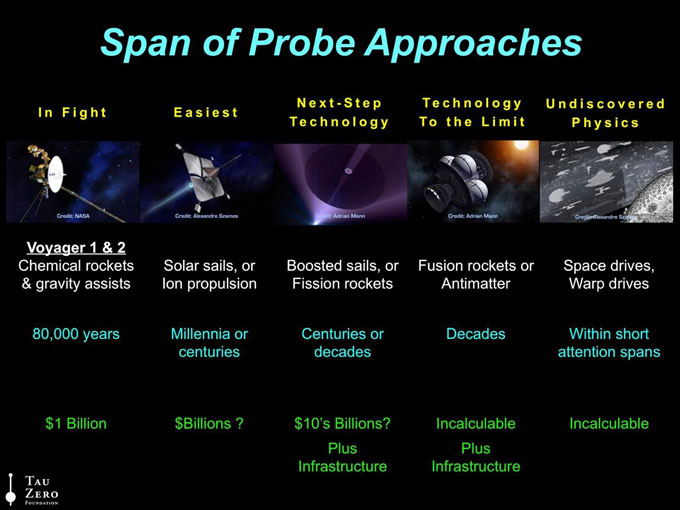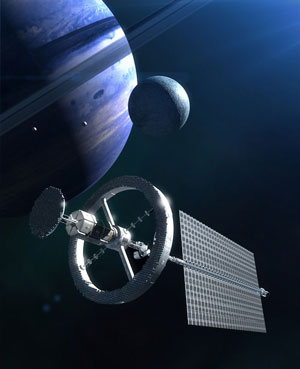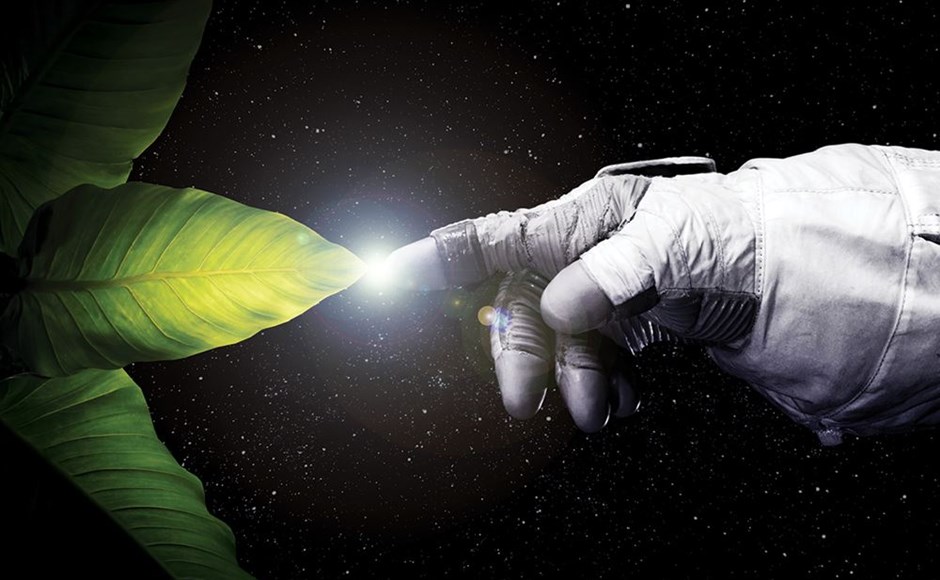Getting There
A Visit to a Near Neighbor
To reach Alpha Centauri within a human lifespan requires a spacecraft traveling one-thousand times faster than Voyager.
Increasing speed by a factor of a thousand requires at least a million times more energy. The challenge is even greater for reaching habitable planets.
Although no Earth-like planets have been discovered, provisional estimates suggest that they will be at least five times farther than Alpha Centauri (20 light years – 200 light years).
Extraterrestrial intelligence could conceivably be over a hundred times farther than Alpha Centauri (500 light years – 6000 light years).

Numerous ideas have been suggested for how to get there. With many facts still uncertain, it is too early to determine which idea is best.
At this stage, the choices are subjective and can be grouped into these three perspectives: technological, human survival, and physics.
Technological Emphasis
Aim: Improve technology until a mission/vehicle concept emerges that will garner the support to build, launch, and operate the mission through competition.
Challenge: Determine a viable balance between performance and attainability, where the mission is sufficiently meaningful, feasible, and affordable. The simplest and most affordable technology (solar sails) would take millennia to cover interstellar distances but might be useful for practice missions.
At the other extreme, it might be possible to send a probe to our nearest star systems with a flight time of only decades, but this requires technology pushed to the limit of physics, and a supporting infrastructure that might take over a century to build. The estimates of performance and readiness vary wildly depending on which conclusion is being advocated.


Human Survival Emphasis
Aim: Enable humanity to survive beyond the fate of Earth and our solar system by creating self-sustaining colony ships that can support generations of people as they coast through space, or to eventually reach habitable planets to colonize.
Challenge: It is still difficult to determine realistic design requirements from which to begin the work. What is the minimum, sustainable population size? How much energy, materials, and microbes are needed to support each individual? What type of social and governing structure can sustain peaceful and satisfying lives in such isolation for indefinite periods? Will the inhabitants be humans in their current form, or some stage of trans-humanism or non-biological life?
Physics Emphasis
Aim: Discover how to reach “new worlds, new life, and new civilizations” as easily as depicted in science fiction. Or in more accurate terms: advance physics in search of breakthrough methods of space flight.
Today’s technology is based on the physics of the prior century. To surpass those limits, it is necessary to further advance physics to discover new operating principles that could usher in a whole new era of profound technological prowess.
Challenge: Ideal starflight requires a few breakthroughs in physics, whose viability is uncertain:
- engineered gravitation
- faster-than-light (FTL) motion
- extreme energy prowess
- a high level of societal discipline to harness that power safely
Though progress has commenced, it is too soon to predict when, and if, the desired breakthroughs will be achieved. Will it be in years, decades, or centuries?
